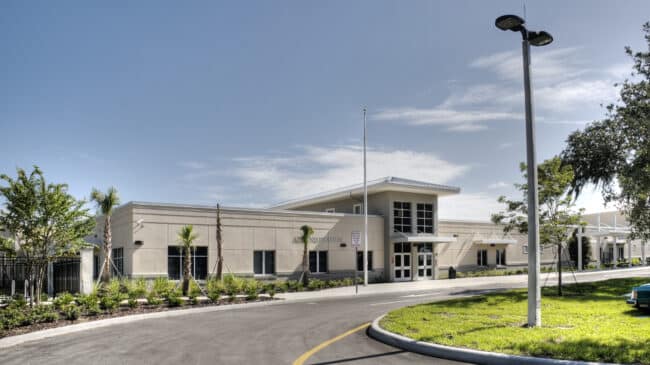Florida has long been a leader in school choice, yet one of the state’s most popular school choice programs, Controlled Open Enrollment (COE), is often overlooked.
Established in 2016, Controlled Open Enrollment lets students transfer to public schools other than their residentially assigned one so long as capacity is available. Florida’s COE program is one of the best in the nation because all school districts must participate in cross- and within-district open enrollment at no cost to students, and school districts must be transparent, ensuring that the open enrollment process is fair.
New data provided by the Florida Department of Education, based on school district surveys, shows how nearly 1-in-10 of the state’s public school students rely on open enrollment to attend schools that are the right fit.
As of the 2022-23 school year, 272,800 students, more than 9% of public school students, used COE in 54 of Florida’s 67 school districts. That’s more than three times the number of students who used the Florida Empowerments Scholarship (FES) for Educational Options, the state’s universal education savings account last year.
Despite the program’s fledgling status, it’s remarkably sturdy. Even though participation rates declined during the COVID-19 pandemic by almost 9%, they have since nearly rebounded to the program’s peak participation, which more than 273,000 students achieved during the 2018-19 school year.
During the 2022-23 school year, more than 267,000 transfer students used Controlled Open Enrollment to transfer to schools inside their school districts but outside their attendance areas. Only 2%, or about 5,700 students, used COE to transfer to schools outside their school districts.
This disparity is likely due to the fact that all Florida school districts are county-based, making them unusually large. As a result, open enrollment participation is often concentrated in the state’s sprawling suburban and urban school districts. For example, six school districts hosted more than 66% of all transfer students during the 2022-23 school year. At the same time, COE participants comprised a significant number of five school districts’ total enrollment.
Table 1: Florida School Districts Enrolling at Least 15,000 COE Students
| School District | Total Enrollment | Total Transfers | Within-district Transfers | Cross-district Transfers | % Open Enrollment |
| Broward County | 269,170 | 24,485 | 24,007 | 478 | 9% |
| Miami-Dade County | 359,689 | 16,208 | 16,208 | 518 | 5% |
| Hillsborough County | 233,129 | 15,996 | 15,738 | 257 | 7% |
| Lee County | 102,189 | 79,804 | 79,804 | 0 | 78% |
| St. Lucie County | 48,281 | 29,551 | 29,550 | 1 | 61% |
Source: Florida Department of Education data request.
On average, in Florida, COE students make up about 10% of a school district’s total enrollment.
A diverse group of students use COE for an array of reasons. During the 2022-23 school year, 54% of COE participants were on the free and reduced-price lunch, showing that COE lets many students from low-income households access education opportunities in areas where they can’t afford to live.
At the same time, 94% of students using COE to attend a school in another school district transferred to school districts rated as “A” or “B” by the Florida Department of Education.
Students use open enrollment for a variety of reasons. Research from other states, such as California, showed that students used open enrollment to escape bullying, access Advanced Placement (AP) or International Baccalaureate courses, and specialized education programming, according to the state’s Legislative Analyst’s Office’s 2016 and 2021 reports.
Open enrollment remains a key player in Florida’s education marketplace. However, it’s not the only school choice option available to K-12 students. The state has several private and public school choice programs, serving more than 890,000 students during the 2022-23 school year.
Table 2: Florida’s School Choice Programs
| Program Type | Participants SY 2022-23 |
| Charter Schools | 382,367 |
| Open Enrollment | 272,800 |
| Family Empowerment Scholarship for Educational Options Program | 83,700 |
| Family Empowerment Scholarship for Students with Unique Abilities | 25,310 |
| Florida Tax Credit Scholarship Program | 125,637 |
| Hope Scholarship Program | 249 |
| Total | 890,063 |
Source: EdChoice, Florida Department of Education
Florida is a bastion of school choice. COE is an integral part of how families in the Sunshine State exercise school choice. State policymakers in other states that are currently considering adopting open enrollment policies, such as Ohio, New Hampshire, Virginia, and Missouri, should use Florida’s Controlled Open Enrollment policy as a model.

